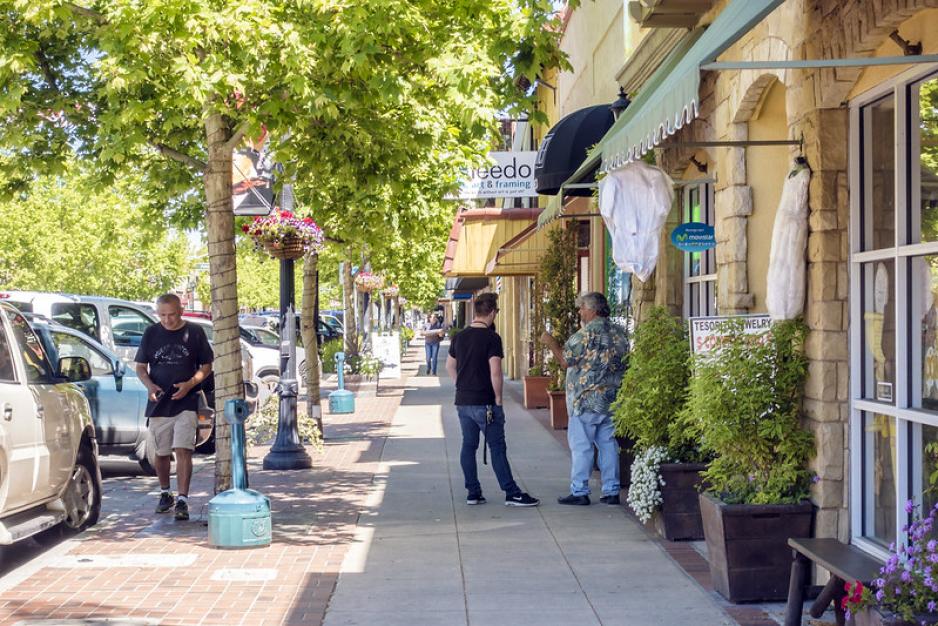Locate retail strategically so that businesses receive adequate foot traffic and are located near other complementary businesses.
Retail services may be spread among stations along a corridor and need not coexist at a single transit station.
- Cluster new retail in nodes or districts where existing retail is located, near complementary existing amenities, and in close walking proximity (within a five- and no more than a ten-minute walk) to a transit station.
- Enhance the environment and safety conditions of the walking and/or biking paths from the transit station to/from retail, such as creating buffers from vehicle traffic, improving lighting, and providing a direct route.
- Prioritize ground floor uses to serve pedestrians along key street frontages within a five-minute walk of a transit station and encourage or require street-facing retail uses at the ground level of parking structures to activate and enhance the street frontage.
Body
